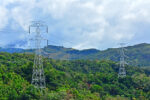Office leasing activity in Metro Manila improved sharply in the first half of 2025, but continued to face persistent space give-backs from business process outsourcing (BPO) firms and corporate occupiers, according to property consultancy JLL Philippines.
Janlo de los Reyes, JLL Philippines head of research and strategic consulting, said gross leasing volumes surged by 80 percent year-on-year to 582,000 square meters, largely due to strong demand in the first quarter. However, he emphasized that the growth momentum eased in the second quarter, with volumes dropping 18 percent to 262,000 sqm from 320,000 sqm in Q1.
“In 1Q, both BPOs and corporates drove take-up. By 2Q, corporate demand softened while the BPO sector maintained its leasing momentum,” de los Reyes explained.
Looking ahead, JLL projects leasing activity to stabilize for the rest of the year, potentially reaching 800,000 to 900,000 sqm in gross leasing volume by end-2025.
Despite the headline growth, move-outs remain a key drag, with over 5,000 sqm of space vacated—split between 3,000 sqm from BPO firms and 2,000 sqm from corporate tenants, primarily in Taguig.
Makati saw the most relocation activity, particularly in older buildings, as tenants shifted to newer developments offering more competitive rents and modern amenities.
Rental rates remained largely flat, with headline rents averaging ₱973/sqm and actual transacted rents at ₱875/sqm. De los Reyes noted that landlords are keeping rates competitive, especially those facing prolonged vacancies.
“Occupiers are still exploring cost-effective alternatives across the metro. Landlords with weaker occupancy are adjusting rents downward, while premium landlords are testing higher thresholds,” he added.
New supply also remains muted, with only 7,000 sqm of new office space added the past three quarters. However, JLL expects a major influx of around 568,000 sqm in H2, which could push vacancy rates higher.
Vacancy rates are projected to stay elevated at around 18 percent in the near term. Notably, Bonifacio Global City (BGC) continues to outperform with sub-10 percent vacancy at 9.6 percent, followed closely by Makati CBD, driven by sustained demand from both BPO and corporate occupiers.
Conversely, the Bay Area, encompassing Pasay, Parañaque, and Manila, remains under pressure with high vacancies and limited new take-up, a result of vacated offshore gaming spaces and tepid interest from new tenants.
“Except for BGC and Makati, double-digit vacancy remains the norm across most office districts,” de los Reyes said.







